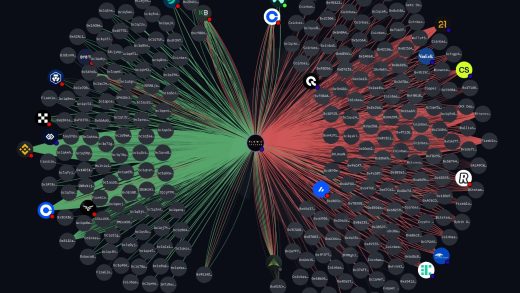1. Industry Risk Analysis
(1) Policy Risk
The meteorological informatization industry faces multiple risks at each stage of the policy lifecycle: During the policy formulation period (such as the accelerated legislation on data security), it may rapidly increase the compliance costs of enterprises; during the policy implementation period, there is uncertainty in market access due to the inconsistent grassroots regulatory standards; during the policy adjustment period, along with the iteration of technical routes (such as the unclear regulatory rules for meteorological AI models), the existing investments may face the risk of becoming sunk costs; during the policy termination period, the opaque mechanism of the reduction of technical subsidies affects the cash – flow planning of enterprises. The particularity of the industry exacerbates the risks – meteorological data involves national security, resulting in high policy sensitivity. The public – product attribute makes the price mechanism strongly intervened by policies. The contradiction between the rapid technological iteration and the policy lag is prominent. The current policy game between cross – border data flow and local storage directly affects the enterprise’s choice of technical routes.
(2) Economic Risk
The meteorological informatization industry currently faces multiple risks brought about by economic cycle fluctuations: During the recession period, government finance may cut the budget for meteorological infrastructure construction, directly affecting the scale of project tenders; during the stagflation period, enterprise customers are more inclined to cut non – core digital investments, leading to a contraction in the order volume; during the interest – rate hike cycle, the financing cost is pushed up, putting pressure on the cash flow of start – up enterprises with heavy R & D investments; the rise in commodity prices combined with supply – chain instability raises the costs of hardware procurement and operation and maintenance; leading enterprises initiate price competition with their capital advantages, further squeezing the profit margins of small and medium – sized entrepreneurs; the uncertainty in the progress of the carbon – neutral policy causes intermittent fluctuations in the market demand side, weakening the predictability of industry growth.
(3) Social Risk
The meteorological informatization industry faces the risk of inter – generational demand rupture. The Z – generation has a surge in demand for real – time, scenario – based visual data services, while traditional institutional users still rely on standardized meteorological products. The difference in inter – generational consumption preferences leads to a mismatch between technological iteration and market acceptance; the inter – generational trust gap in the public’s trust in the authority of meteorological data is widening. The younger generation is more inclined to cross – verify folk meteorological information, weakening the bargaining power of professional institutions’ data services; the difference in inter – generational awareness of technological ethics intensifies privacy disputes. New – generation users are more sensitive to the strong correlation between meteorological data and personal privacy such as travel/health, which may trigger social debates on the boundaries of the compliant use of data; the inter – generational communication effectiveness of disaster warning services is declining. The low penetration rate of the silver – haired group in digital warning channels may give rise to social doubts about the attribution of secondary disaster responsibilities.
(4) Legal Risk
The legal risks in the meteorological informatization industry are concentrated in three aspects: data compliance, intellectual property rights, and qualification access. Data collection and processing must strictly follow the “Cybersecurity Law”, “Data Security Law”, and “Personal Information Protection Law”. Improper use or leakage may lead to high – value fines; derivative applications of meteorological data are prone to involve intellectual – property disputes with third – party meteorological institutions or satellite data. Unauthorized use will face lawsuits; the industry is regulated by the meteorological bureau. Failure to obtain the “Meteorological Information Service License” or illegal commercialization of meteorological data (such as disaster warnings) may result in business suspension and rectification; entrepreneurs need to establish a full – lifecycle data compliance system, clarify the authorization of data sources, and simultaneously pay attention to the updates of local meteorological regulations to avoid the risk of policy lag.
2. Entrepreneurship Guide
(1) Suggestions on Entrepreneurship Opportunities
Entrepreneurship opportunities in the meteorological informatization industry are concentrated in the in – depth integration of high – precision meteorological data with vertical fields. Three types of products should be focused on: decision – support systems for agricultural disaster prevention and mitigation, algorithm packages for dynamic path optimization in logistics and transportation, and tools for predicting the power generation of new – energy stations. Entrepreneurs should target three types of customers: small and medium – sized farmers, urban – distribution logistics enterprises, and distributed photovoltaic operators. By using satellite remote – sensing data and AI modeling technology, they should deeply integrate short – term weather warnings with industry production processes. Through API interfaces or lightweight SaaS platforms, they can provide real – time meteorological risk response modules that can be embedded in existing management systems. The charging model should adopt “free basic algorithms + subscription – based industry – scenario solutions”. They should give priority to establishing data – cooperation channels with provincial meteorological big – data platforms and simultaneously apply for special subsidies for the transformation of meteorological scientific and technological achievements.
(2) Suggestions on Entrepreneurship Resources
Focus on obtaining core technological resources and collaborating with strategic partners. Give priority to connecting with data interfaces of meteorological departments, third – party cloud service providers, and intelligent hardware manufacturers. Reduce data – procurement costs through API integration; build a lightweight technological architecture. Adopt a hybrid model of open – source and self – developed to develop core algorithm modules. Rely on mainstream cloud platforms for elastic deployment to reduce IT investment; focus on integrating a composite team composed of meteorological professionals and AI engineers. Obtain government data – resource support by participating in pilot projects of the meteorological bureau. Simultaneously apply for scientific and technological innovation funds and special subsidies for smart cities. Establish a dual – channel mechanism for capturing customer resources through industry exhibitions and science and technology competitions.
(3) Suggestions on Entrepreneurship Teams
Entrepreneurship teams in the meteorological informatization industry need to focus on recruiting meteorologists, software engineers, and data scientists to form a complementary structure. Managers should establish an interdisciplinary collaboration mechanism and an agile development process. Core talents should be bound through equity incentives. Members with technical backgrounds in meteorological departments or experience in meteorological data modeling should be recruited first. At the same time, a network of meteorological business expert consultants should be built. The team size should be controlled within 10 people for flat management. A weekly technical – business joint meeting should be held to ensure the precise connection between product R & D and meteorological service needs. Team members must complete special training on meteorological data processing and industry policies and regulations.
(4) Suggestions on Entrepreneurship Risks
Meteorological informatization entrepreneurs need to first establish a flexible technological architecture. Use mainstream open – source frameworks to rapidly iterate products and reduce the risk of technological incompatibility; strictly follow the “Meteorological Data Management Measures”, actively apply for meteorological service qualification certification and conduct regular compliance audits to avoid the risk of policy changes; verify the business model through pilot cooperation with government meteorological departments. Develop customized modules for vertical fields such as agriculture and logistics to ensure the real existence of market demand; build a redundant supply – chain system. Sign hierarchical procurement agreements with multi – source satellite data providers to ensure the stability of data sources; implement a dynamic fund – allocation mechanism. The investment in core algorithm R & D should account for no less than 40%. Edge – computing nodes should be deployed first to reduce operating costs; establish a meteorological data security sandbox. Use blockchain evidence – storage technology to prevent the risk of data tampering, and configure a 24/7 security response team.





